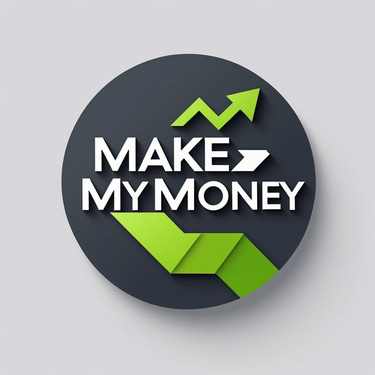Student Loan Forgiveness in 2025: What Borrowers Need to Know Now
Student loan forgiveness in 2025 could bring major changes. Learn about PSLF, SAVE Plan, eligibility, and how to prepare. Get expert insights and borrower success stories.
LOANS


Student Loan Forgiveness in 2025: What Borrowers Need to Know Now.
Introduction
Student loan debt in the United States has reached a staggering $1.7 trillion, affecting over 43 million borrowers. With the Biden administration's ongoing efforts to reform student loan repayment and forgiveness programs, 2025 is shaping up to be a pivotal year for borrowers.
This comprehensive guide will cover:
The latest updates on student loan forgiveness programs.
Key eligibility requirements.
How to prepare for potential changes.
Alternative repayment options.
Real-life borrower stories.
FAQs to address common concerns.
Whether you're a recent graduate, a parent with Parent PLUS loans, or a long-term borrower, this article will help you navigate the evolving landscape of student loan forgiveness in 2025.
1. The Current State of Student Loan Forgiveness.
A. Biden’s SAVE Plan & Recent Developments.
The Saving on a Valuable Education (SAVE) Plan, introduced in 2023, is an income-driven repayment (IDR) plan designed to reduce monthly payments and accelerate forgiveness. Key features include:
Lower monthly payments (5% of discretionary income for undergraduates, 10% for graduate loans).
Faster forgiveness (as little as 10 years for original balances under $12,000).
No unpaid interest accumulation if payments are made on time.
Example: Maria, a social worker earning $40,000/year, previously paid $300/month under REPAYE. Under SAVE, her payment drops to $90/month, saving her thousands over time.
B. Supreme Court’s Block on Mass Forgiveness.
In 2023, the Supreme Court struck down Biden’s one-time $10,000-$20,000 forgiveness plan, leaving borrowers reliant on existing programs like:
Public Service Loan Forgiveness (PSLF).
Income-Driven Repayment (IDR) Forgiveness.
Closed School Discharge.
Borrower Defense to Repayment.
C. What’s Expected in 2025?
Potential new forgiveness proposals (depending on election outcomes).
Expanded PSLF eligibility for more professions.
Automatic enrollment in IDR plans for delinquent borrowers.
2. Key Student Loan Forgiveness Programs in 2025.
A. Public Service Loan Forgiveness (PSLF).
Who Qualifies?
Government & nonprofit employees.
120 qualifying payments under an IDR plan.
2025 Updates:
Temporary waiver benefits may expire.
More automated certification processes.
Story: James, a public school teacher, had 5 years of payments not counted due to wrong repayment plans. The PSLF waiver fixed this, and he’s now on track for forgiveness in 2025.
B. Income-Driven Repayment (IDR) Forgiveness.
After 20-25 years of payments, remaining balances are forgiven (taxable in some states).
SAVE Plan Benefits:
Forgiveness in 10 years for balances ≤ $12,000.
No negative amortization (balance won’t grow due to unpaid interest).
C. Borrower Defense to Repayment.
For borrowers defrauded by for-profit schools (e.g., ITT Tech, Corinthian Colleges).
Example: Lisa attended a scam college that shut down. She applied for Borrower Defense and had her $50,000 loans discharged.
D. Teacher Loan Forgiveness.
Up to $17,500 forgiven for teachers in low-income schools after 5 years.
3. How to Prepare for Student Loan Forgiveness in 2025.
Step 1: Check Your Eligibility.
Use the Federal Student Aid (FSA) portal (studentaid.gov)
Confirm if you qualify for PSLF, IDR, or other programs
Step 2: Enroll in the Right Repayment Plan.
SAVE Plan (best for low-income borrowers).
PAYE or IBR (if SAVE isn’t optimal).
Step 3: Submit Employment Certification Annually (PSLF Borrowers).
Avoid last-minute rejections due to missing paperwork.
Step 4: Monitor Legislative Changes.
Follow updates from the Department of Education.
Be wary of student loan scams promising instant forgiveness.
4. Alternatives If You Don’t Qualify for Forgiveness.
A. Refinancing (For High-Income Borrowers).
Lower interest rates with private lenders (but lose federal protections).
B. Extended or Graduated Repayment Plans.
Lower payments initially, but more interest long-term.
C. Loan Rehabilitation (For Defaulted Borrowers).
Make 9 on-time payments to exit default.
5. Real-Life Borrower Success Stories.
Case Study 1: PSLF Success.
Sarah, Nurse Practitioner
Debt: $80,000
Strategy: Enrolled in PSLF + REPAYE (now SAVE)
Result: $0 remaining balance after 10 years
Case Study 2: IDR Forgiveness.
David, Freelance Writer
Debt: $45,000.
Strategy: 25 years of IDR payments.
Result: $32,000 forgiven (but taxable).
6. Frequently Asked Questions (FAQs)
Q1: Will there be another mass student loan forgiveness in 2025?
A: It depends on the 2024 election results and congressional actions. Currently, no large-scale forgiveness is confirmed.
Q2: Is student loan forgiveness taxable?
A: Federal taxes are waived until 2025 (under the American Rescue Plan), but some states tax forgiven amounts.
Q3: Can private student loans be forgiven?
A: Generally no, but some lenders offer hardship programs.
Q4: How do I know if I qualify for PSLF?
A: Work for a government or 501(c)(3) nonprofit, have Direct Loans, and be on an IDR plan.
Q5: What if my loans are in default?
A: Rehabilitate them via the Fresh Start program to regain eligibility for forgiveness.
Conclusion: Act Now for Maximum Benefits
Student loan forgiveness in 2025 presents both opportunities and challenges. Whether through PSLF, SAVE, or other programs, borrowers must stay informed, submit paperwork on time, and choose the best repayment strategy.
Next Steps:
✅ Check your loan status at studentaid.gov
✅ Enroll in SAVE or PSLF if eligible
✅ Avoid scams—only trust official government sources
By taking action now, you can minimize your debt and maximize forgiveness benefits in 2025 and beyond.
